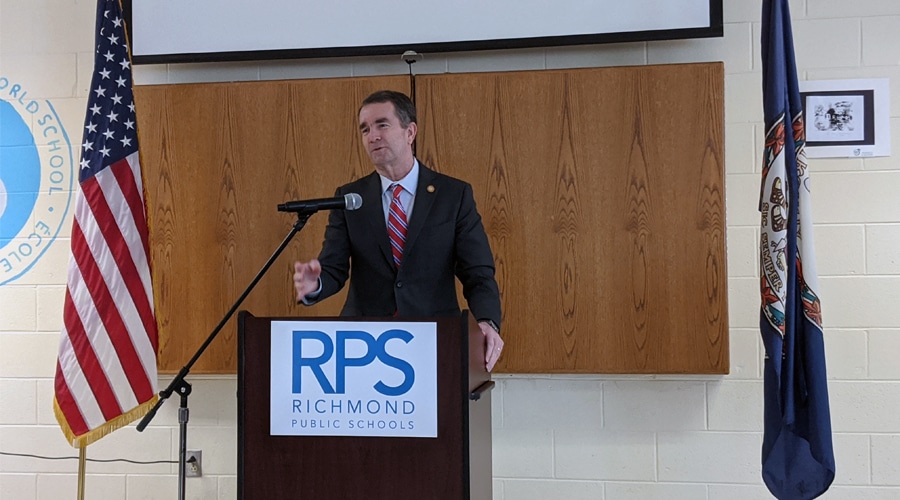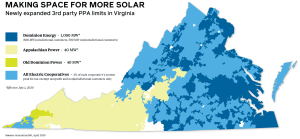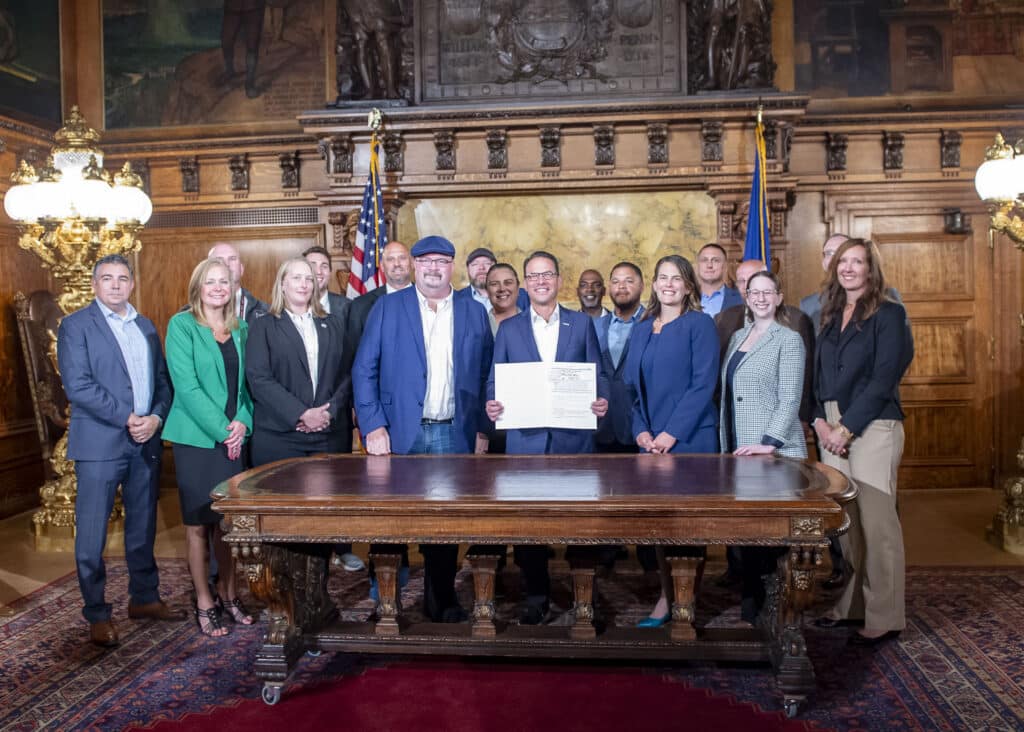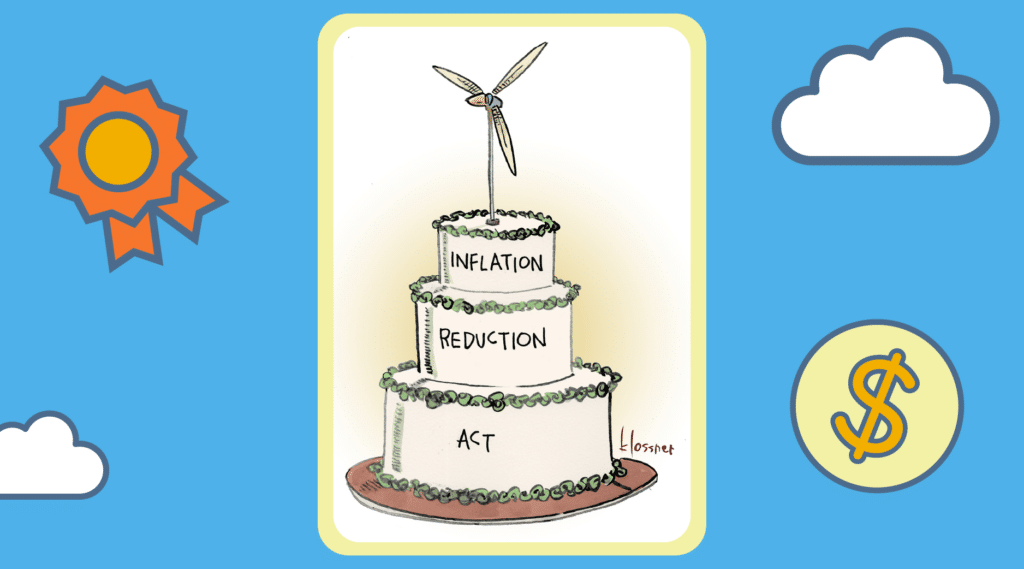On April 11, Virginia officially began its transformation from a clean energy laggard to a regional leader. By signing the Virginia Clean Economy Act (VCEA), Governor Northam enacted landmark legislation that makes Virginia the first state in the south to commit to 100% clean energy by 2050.
In addition to setting strong climate goals, this newly signed law, in coordination with the Solar Freedom Act, removes limits and barriers to clean energy that had previously stifled the transition away from fossil fuels. These new laws now require all investor-owned utilities in Virginia to allow their nonresidential customers (e.g. businesses, municipal buildings, schools) access to a crucial financing mechanism that helps these customers go solar. This mechanism, called a third-party power purchase agreement (PPA), was used to finance 86% of the existing solar on Virginia’s K-12 public and private schools.
Solar growth—ground to a halt
Before these laws were passed, schools planning to go solar were stymied by a cap on PPAs. In January of this year, the 50 MW cap on third-party PPAs in Dominion Energy territory had been reached. New solar projects for schools, nonprofits, and businesses ground to a halt when Dominion’s pilot program closed. Prior to the new laws, power purchase agreements weren’t even allowed for K-12 schools in Appalachian Power and Old Dominion Power territories.
Generation180’s November 2019 report on solar in Virginia’s schools helped bring this issue to light. We rallied support from concerned citizens and school districts around the state to support better policies, including VCEA and the Solar Freedom Act. (Check out our recent advocacy blog post here and a guest blog post by two Richmond school board members here). While there are still caps on PPAs, the new laws significantly raise these limits and enable Virginia’s school districts to meaningfully contribute to the state’s transition to 100% clean energy.
Time to make some (solar) moves
The new legislation will swing the doors open for Virginia’s school districts to capture the savings, educational opportunities, and environmental benefits that solar brings. Over the past five years, the solar capacity installed at K-12 schools statewide grew by over 60X. That exponential growth of clean energy is expected to continue, at least until the new limits are reached.
Here’s more good news: no matter what your role might be (such as student, parent, grandma, teacher, community member, or school administrator), you can help your local school go solar. Our free Solar Schools Campaign Toolkit lays out every step of running a campaign in your community. It’s time to get more of our schools saving money, enhancing STEM learning, and driving our transition to a clean energy future.
BONUS: The nitty gritty
Here’s a summary of changes to third-party power purchase agreements enacted in the new legislation that will be effective beginning July 1, 2020:
Dominion Energy
- The pilot program for third-party PPAs is expanded from 50 MW to 1,000 MW. Half of that amount (500 MW) is reserved for nonjurisdictional customers, which includes school districts and local governments.
- The maximum size project for a clean energy facility that uses a PPA extends from 1 MW to 3 MW.
Old Dominion Power
- Power purchase agreements were previous disallowed. The new pilot program will allow up to 40 MW of capacity financed with third-party power purchase agreements.
Appalachian Power
- The pilot program for third-party PPAs is expanded from 7 MW to 40 MW.
- The previous pilot program only allowed non-profit institutions of higher education to enroll, and the program had zero participants. The new laws make schools, nonprofits, and businesses eligible to participate.
- Further action is needed here! Despite this progress, additional limits on solar in an agreement between Appalachian Power and local governments could impede this progress. Learn more in this article on Energy News Network. Take action by signing this petition and an email will be sent to you local elected officials.
















